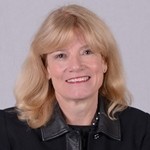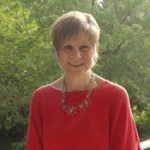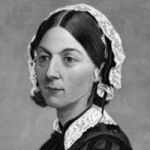I have multiple chronic conditions (MCCs). There—I’ve said it: in my mid-50s, I already have MCCs. Fortunately, nothing is life-threatening, but I do need to keep track of my arthritic toe, my eyesight, and a bit of acid reflux. My friends and I also talk about our weak bladders—likely the precursor to being incontinent later in life, but for now we are managing with the philosophy (in my case, after speaking with my gynecologist): “If there’s a bathroom, we should use it because we never know when we’ll spot another one!”
You’re probably wondering why I’m sharing all of this on the Health in Aging blog. After all, at my age I don’t yet qualify as an older adult. But thinking about all of your conditions any time you get a new diagnosis, try a new vitamin, or are prescribed a new medicine is important at any age. It’s particularly important as you get older, and the American Geriatrics Society (AGS) and the Health in Aging Foundation have tools you can use to create care plans with your providers that take into account all of your conditions and your preferences.
So just what is a chronic condition? Simply put, it’s a physical or mental condition that lasts a year or more and requires ongoing medical attention and/or limits what you can do on a daily basis. At one point, my arthritic left toe was limiting how far I could walk, which, for a New Yorker, had a big impact on my quality of life. Even now, post-surgery, the toe requires an orthotic and monitoring by my doctor. Cute little shoes are basically not an option!
MCC Tools for You
According to Medicare data, more than two-thirds of beneficiaries have 3 or more chronic conditions. If you—or someone you care for—has MCCs, the AGS Health in Aging Foundation has tools that can guide you as you work with clinicians to plan a course of care that takes into account your goals and also helps to prevent having a bad outcome. I always start with our A-Z chapters, as these provide a general overview of a topic and serve as a road map to AGS Health in Aging Foundation resources and those from other organizations. Our chapter on Managing Multiple Health Problems is based on a piece that we created to assist health professionals who are caring for older adults. You can also find other tools, including advice from Drs. Cythia Boyd and Matt McNabney.
Tools for Your Clinicians
The tools and resources that we provide on HealthinAging.org are drawn from the health professional resources of the AGS. In 2012, AGS developed “Guiding Principles for the Care of Older Adults with Multimorbidity: A Stepwise Approach for Clinicians,” which provides a stepwise approach (or one based on a series of stages or steps) for any clinician who is caring for someone with MCCs. One of our primary goals in creating this document was to help clinicians who do not have training in geriatrics and who are treating patients for one or more of their chronic conditions. This is why, with funding from the Agency for Healthcare Research and Quality (AHRQ), we created and released our MCC Geriatrics Evaluation and Management Strategies (GEMS) app this past May and are currently disseminating it to our specialty physician partners. The MCC GEMS app provides a short overview of the guiding principles for busy clinicians as well as some suggested tools that can be helpful to them in managing their older patients.
I know I need to take an active role in managing my own healthcare. That’s why I look for information from trustworthy sources whenever I have a decision to make. Having worked with leaders in the field of geriatrics and gerontology on creating HealthinAging.org, I also know that the information we provide is based on the best evidence available and that it can help you (or someone you love) make healthcare decisions that are consistent with your goals and preferences.
About the Author
Nancy Lundebjerg is the Chief Executive Officer of the American Geriatrics Society and the AGS Health in Aging Foundation.




